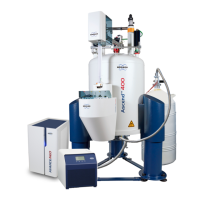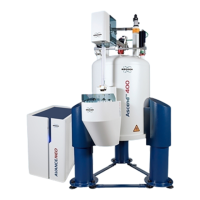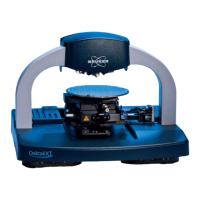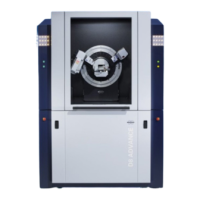Safety
12 H157655_1_008
2.2.4 Standards on Health and Safety in the Workplace
Guidelines on Limits of Exposure to Static Magnetic Fields are introduced by the ICNIRP
(International Commission on Non-Ionizing Radiation Protection). They give separate
guidance for occupational exposures and exposure of general public.
Occupational Exposures
It is recommended that occupational exposure of the head and the trunk should not exceed a
spatial peak magnetic flux density of 2 mT (20 Gauss) except for the following circumstance:
For work applications for which exposures above 2 mT (20 Gauss) are deemed necessary,
exposure up to 8 mT (80 Gauss) can be permitted if the environment is controlled and
appropriate work practices are implemented to control movement-included effects. Sensory
effects due to the movement in the field can be avoided by complying with basic restrictions
set in the ELF guidelines. When restricted to the limbs, maximum exposures of up to 8 mT
(80 Gauss) are acceptable.
General Public Exposures
Based on scientific knowledge on the direct effects of static fields on humans, acute exposure
of the general public should not exceed 400 mT (any part of the body). However, because of
potential indirect adverse effects, ICNIRP recognizes that practical policies need to be
implemented to prevent inadvertent harmful exposure of people with implanted electronic
medical devices and implants containing ferromagnetic materials, and injuries due to flying
ferromagnetic objects, and these considerations can lead to much lower restriction levels,
such as 0.5 mT (IEC 2002). The exposure limits to be set with regard to these non biological
effects are not, however, the duty of ICNIRP.
* From ICNIRP Guidelines published 2009 (http://www.icnirp.de/documents/statgdl.pdf)
European Community Directive
The European Community did release a Directive 2004/40/EC on the minimum health and
safety requirements regarding the exposure of workers to the risks arising from physical
agents (electromagnetic fields).
This directive, depending on the frequency, specifies the following limits of exposure to
electromagnetic fields:
Frequency Range Magnetic Field Strength H Magnetic Flux Density B
0…1 Hz 1.63 x 10
5
A/m 0.2 T or 200 mT
This specification and the following more detailed national regulations are an example that
fulfills the requirements defined and valid within the EU. Depending on the country where the
system is being installed, it is necessary to clarify the country specific or local regulations with
respect to exposure and safety in magnetic fields.
Magnetic field strength is a vector quantity (H), which, together with the magnetic flux density,
specifies a magnetic field at any point in space. It is expressed in Ampere per metre. (A/m).
Magnetic flux density is a vector quantity (B), resulting in a force that acts on moving charges,
expressed in (T). In free space and in biological materials, magnetic flux density and
magnetic field strength can be interchanged using the equivalence 1 A/m = 4π 10
-7
T.
